 W
WHistorically, Scotland has a long military tradition that predates the Act of Union with England. Its soldiers form part of the armed forces of the United Kingdom, more usually referred to domestically within Britain as the British Armed Forces.
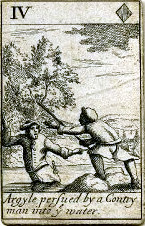 W
WArgyll's Rising or Argyll's Rebellion was a 1685 attempt to overthrow King James II and VII of England, Ireland, and Scotland by a group of Scottish exiles. Led by Archibald Campbell, 9th Earl of Argyll, the rising was intended to tie down Royal forces in Scotland while a simultaneous rebellion under James Scott, 1st Duke of Monmouth began in England. Both rebellions were backed by dissident Protestants opposed to the accession of the Roman Catholic James to the throne.
 W
WA claymore is either the Scottish variant of the late medieval two-handed sword or the Scottish variant of the basket-hilted sword. The former is characterised as having a cross hilt of forward-sloping quillons with quatrefoil terminations and was in use from the 15th to 17th centuries.
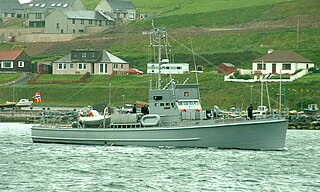 W
WIngvald Olsen Eidsheim DSO, DSC was a Norwegian sailor and war hero. He joined the Shetland bus as the commander of Hitra. He conducted 43 trips to Norway.
 W
WThe Polish I Corps was a tactical unit of the Polish Armed Forces in the West during World War II.
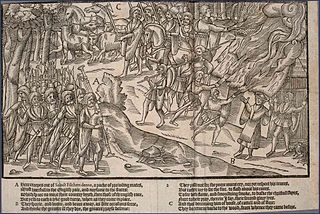 W
WA Kern was a Gaelic warrior, specifically a light infantryman, in Ireland in the late Middle Ages.
 W
WLeif Andreas Larsen DSO, DSC, CGM, DSM and Bar, popularly known as "Shetlands Larsen", was a highly decorated Norwegian sailor. He was arguably the most famous of the men who operated the Shetland bus escape route during the war.
 W
WMons Meg is a medieval bombard in the collection of the Royal Armouries, but on loan to Historic Scotland and located at Edinburgh Castle in Scotland. It has a barrel diameter of 20 inches (510 mm) making it one of the largest cannons in the world by calibre.
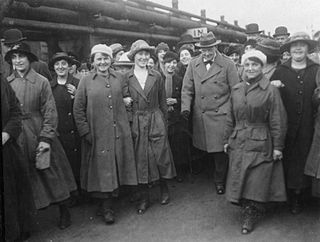 W
WThe National Filling Factory, Georgetown, was a First World War munitions factory situated near Houston in Renfrewshire, Scotland. It is believed that the Ministry of Munitions owned up to 12 filling factories; Georgetown was known as NFF.4.
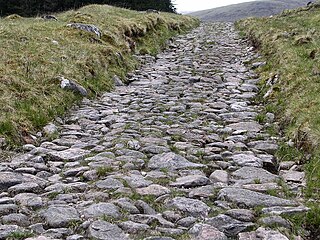 W
WA network of military roads, sometimes called General Wade's Military Roads, was constructed in the Scottish Highlands during the middle part of the 18th century as part of an attempt by the British Government to bring order to a part of the country which had risen up in the Jacobite rebellion of 1715.
 W
WPrillar-Guri or Prillarguri is a semi legendary figure who according to oral tradition was a woman from Sel, Norway who played a key role in the Battle of Kringen in August 1612.
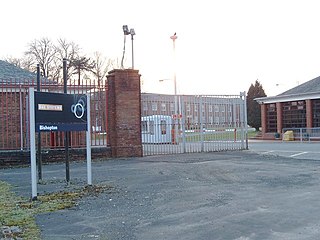 W
WThe Royal Ordnance Factory was a WW2 Ministry of Supply Explosive Factory. It is sited adjacent to the village of Bishopton in Renfrewshire, Scotland. The factory was built to manufacture the propellant cordite for the British Army and the Royal Air Force. It also later produced cordite for the Royal Navy. The Ministry of Works were responsible for the site. It was the biggest munitions factory the MOD had, with up to 20,000 workers.
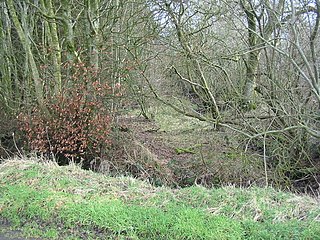 W
WThe Scots' Dike or dyke is a three and a half mile / 5.25 km long linear earthwork, constructed by the English and the Scots in the year 1552 to mark the division of the Debatable lands and thereby settle the exact boundary between the Kingdom of Scotland and the Kingdom of England.
 W
WThe 1971 Scottish soldiers' killings took place in Northern Ireland during The Troubles. It happened on 10 March 1971, when the Provisional Irish Republican Army shot dead three unarmed British Army soldiers of the 1st Battalion, Royal Highland Fusiliers. Two of the three soldiers were teenage brothers; all three were from Scotland. They were murdered off-duty and in civilian clothes, having been lured from a city-centre bar in Belfast, driven to a remote location and shot whilst relieving themselves by the roadside. Three British soldiers had been killed prior to this event; all had been on duty and killed during rioting.
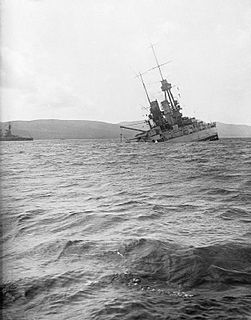 W
WThe scuttling of the German fleet took place at the Royal Navy's base at Scapa Flow, in the Orkney Islands of Scotland, shortly after the First World War. The High Seas Fleet was interned there under the terms of the Armistice whilst negotiations took place over the fate of the ships. Fearing that all of the ships would be seized and divided amongst the Allies, Admiral Ludwig von Reuter decided to scuttle the fleet.
 W
WThe Wallace Sword is an antique two-handed sword purported to have belonged to William Wallace (1270–1305), a Scottish knight who led a resistance to the English occupation of Scotland during the Wars of Scottish Independence. It is said to have been used by William Wallace at the Battle of Stirling in 1297 and the Battle of Falkirk (1298).
 W
WThe Wars of Scottish Independence were a series of military campaigns fought between the Kingdom of Scotland and the Kingdom of England in the late 13th and early 14th centuries.